这篇文章将为大家详细讲解有关如何将项目升级到vue-cli3,小编觉得挺实用的,因此分享给大家做个参考,希望大家阅读完这篇文章后可以有所收获。
一. 原以为升级vue-cli3的路线是这样的:
创建vue-cli3项目,按原有项目的配置选好各项配置
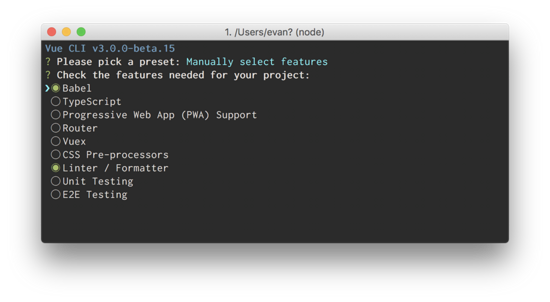
迁移目录
src->src static->public
对比新旧 package.json ,然后 yarn install ,完毕。
然鹅... 运行项目,报错 You are using the runtime-only build of Vue...... : 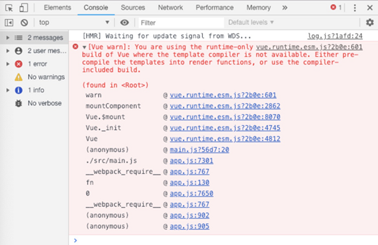

然后去查了下旧项目的相关字眼文件:
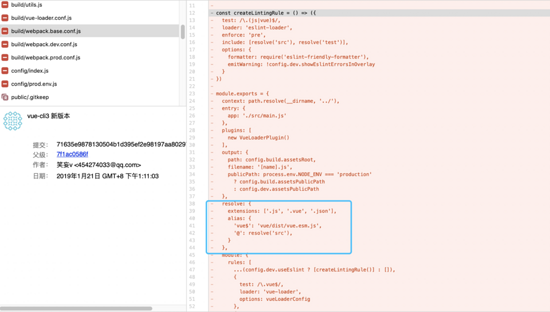
噢,原来是vue-cli3的webpack相关文件都得自己写。于是乎根据官网的指引,在根目录创建了 vue.config.js
此时粗略配置:
chainWebpack: config => {
config.module
.rule('vue')
.use('vue-loader')
.loader('vue-loader')
.tap(options => {
options.compilerOptions.preserveWhitespace = false
return options
})
config.resolve.alias
.set('vue$', 'vue/dist/vue.esm.js')
.set('@', resolve('src'))
}二. 此时勉强能跑起来,但后续遇到了这些坑:
#1 public 静态资源不加载
```
const CopyWebpackPlugin = require('copy-webpack-plugin')
// ....
// 确保静态资源
config.resolve.extensions = ['.js', '.vue', '.json', '.css']
config.plugins.push(
new CopyWebpackPlugin([{ from: 'public/', to: 'public' }]),
)
```#2 Chrome 查看样式时无法找到源文件
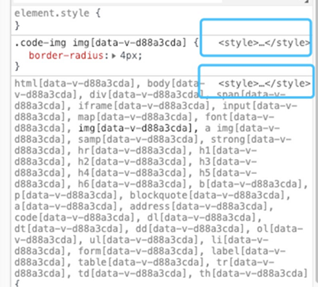
原因: vue-cli3 里默认关闭 sourceMap,样式都会被打包到首页。 解决: 需要自己配置打开
// 让样式找到源
css: {
sourceMap: true
},#3 生产环境的 debuger 和 console 无法通过 uglifyjs-webpack-plugin 和 uglify-es 剔除
原因:不支持 es6 , 需要配置 babel ( uglify-es 按配置填会显示不存在选项)
解决:插件terser
```
const TerserPlugin = require('terser-webpack-plugin')
if (process.env.NODE_ENV === 'production') {
// 为生产环境修改配置...
new TerserPlugin({
cache: true,
parallel: true,
sourceMap: true, // Must be set to true if using source-maps in production
terserOptions: {
compress: {
drop_console: true,
drop_debugger: true
}
}
})
} else {
// 为开发环境修改配置...
}
```#4 无法在 config 目录下配置不同环境的 API_URL ,用于跨域请求
原因: vue-cli3 中需要遵循变量规则,使用 VUE_APP 前缀
官方规则: 在客户端侧代码中使用环境变量
解决:于是你需要创建如下几个文件:
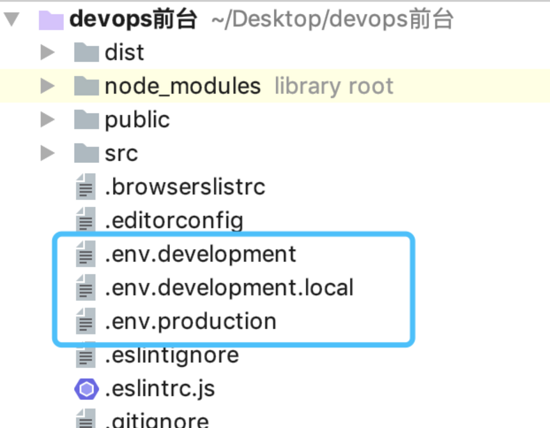
.local 也可以加在指定模式的环境文件上,比如 .env.development.local 将会在 development 模式下被载入,且被 git 忽略。
文件内容:
// env.development.local NODE_ENV = development VUE_APP_URL = http://xxx.x.xxx/
#5 vue-cli代理转发控制台反复打印 "WebSocket connection to'ws://localhost..."

解决方法:
vue.config.js 中配置 devServer.proxy 的 ws 为 false
结合上述两步,相对应的 vue.config.js ,需要这么写:
const env = process.env.NODE_ENV
let target = process.env.VUE_APP_URL
const devProxy = ['/api', '/'] // 代理
// 生成代理配置对象
let proxyObj = {};
devProxy.forEach((value, index) => {
proxyObj[value] = {
ws: false,
target: target,
// 开启代理:在本地会创建一个虚拟服务端,然后发送请求的数据,并同时接收请求的数据,这样服务端和服务端进行数据的交互就不会有跨域问题
changeOrigin: true,
pathRewrite: {
[`^${value}`]: value
}
};
})
// ....
devServer: {
open: true,
host: 'localhost',
port: 8080,
proxy: proxyObj
}最后贴上我的 vue.config.js :
const CopyWebpackPlugin = require('copy-webpack-plugin')
const TerserPlugin = require('terser-webpack-plugin')
const path = require('path')
const env = process.env.NODE_ENV
let target = process.env.VUE_APP_URL
const devProxy = ['/api', '/'] // 代理
// 生成代理配置对象
let proxyObj = {};
devProxy.forEach((value, index) => {
proxyObj[value] = {
ws: false,
target: target,
// 开启代理:在本地会创建一个虚拟服务端,然后发送请求的数据,并同时接收请求的数据,这样服务端和服务端进行数据的交互就不会有跨域问题
changeOrigin: true,
pathRewrite: {
[`^${value}`]: value
}
};
})
function resolve (dir) {
return path.join(__dirname, dir)
}
module.exports = {
publicPath: '/',
// 让样式找到源
css: {
sourceMap: true
},
configureWebpack: config => {
// 确保静态资源
config.resolve.extensions = ['.js', '.vue', '.json', '.css']
config.plugins.push(
new CopyWebpackPlugin([{ from: 'public/', to: 'public' }]),
)
if (process.env.NODE_ENV === 'production') {
// 为生产环境修改配置...
new TerserPlugin({
cache: true,
parallel: true,
sourceMap: true, // Must be set to true if using source-maps in production
terserOptions: {
compress: {
drop_console: true,
drop_debugger: true
}
}
})
} else {
// 为开发环境修改配置...
}
},
chainWebpack: config => {
config.module
.rule('vue')
.use('vue-loader')
.loader('vue-loader')
.tap(options => {
options.compilerOptions.preserveWhitespace = false
return options
})
config.resolve.alias
.set('vue$', 'vue/dist/vue.esm.js')
.set('@', resolve('src'))
},
devServer: {
open: true,
host: 'localhost',
port: 8080,
proxy: proxyObj
}
}三. Eslint相关报错及配置
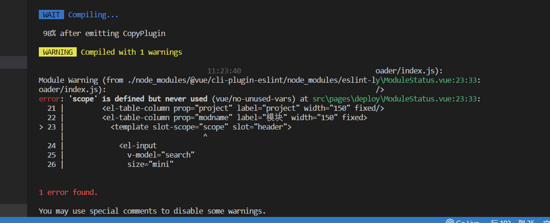
module.exports = {
root: true,
env: {
node: true
},
'extends': [
'plugin:vue/essential',
'@vue/standard'
],
rules: {
'generator-star-spacing': 'off',
'object-curly-spacing': 'off',
// 最常出现的错误
'no-unused-vars': 'off',
// 最常出现的错误
"vue/no-use-v-if-with-v-for": ["error", {
"allowUsingIterationVar": true
}],
'no-console': process.env.NODE_ENV === 'production' ? 'error' : 'off',
'no-debugger': process.env.NODE_ENV === 'production' ? 'error' : 'off'
},
parserOptions: {
parser: 'babel-eslint'
}
}最后的最后,跑个项目
yarn serve

yarn build

关于“如何将项目升级到vue-cli3”这篇文章就分享到这里了,希望以上内容可以对大家有一定的帮助,使各位可以学到更多知识,如果觉得文章不错,请把它分享出去让更多的人看到。
免责声明:本站发布的内容(图片、视频和文字)以原创、转载和分享为主,文章观点不代表本网站立场,如果涉及侵权请联系站长邮箱:is@yisu.com进行举报,并提供相关证据,一经查实,将立刻删除涉嫌侵权内容。